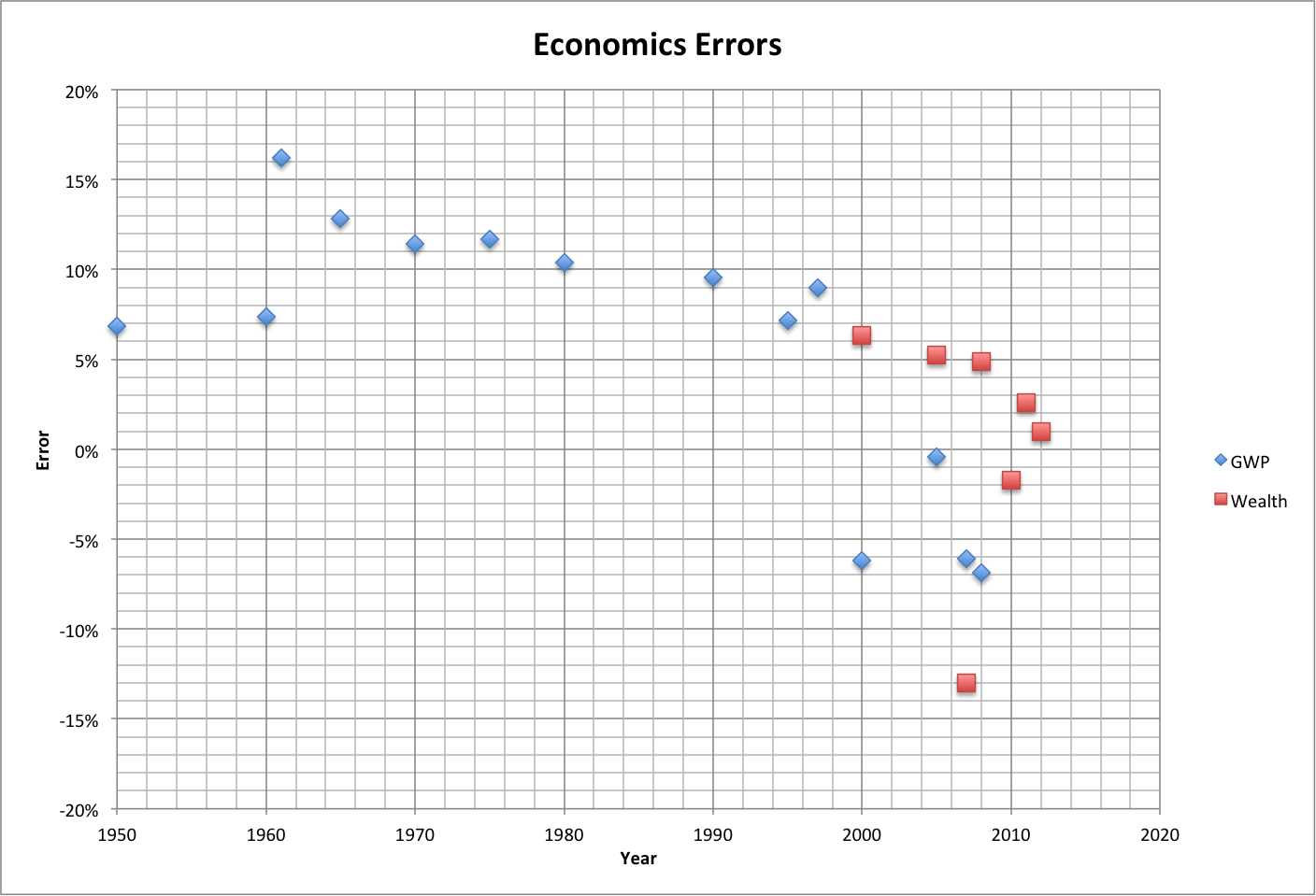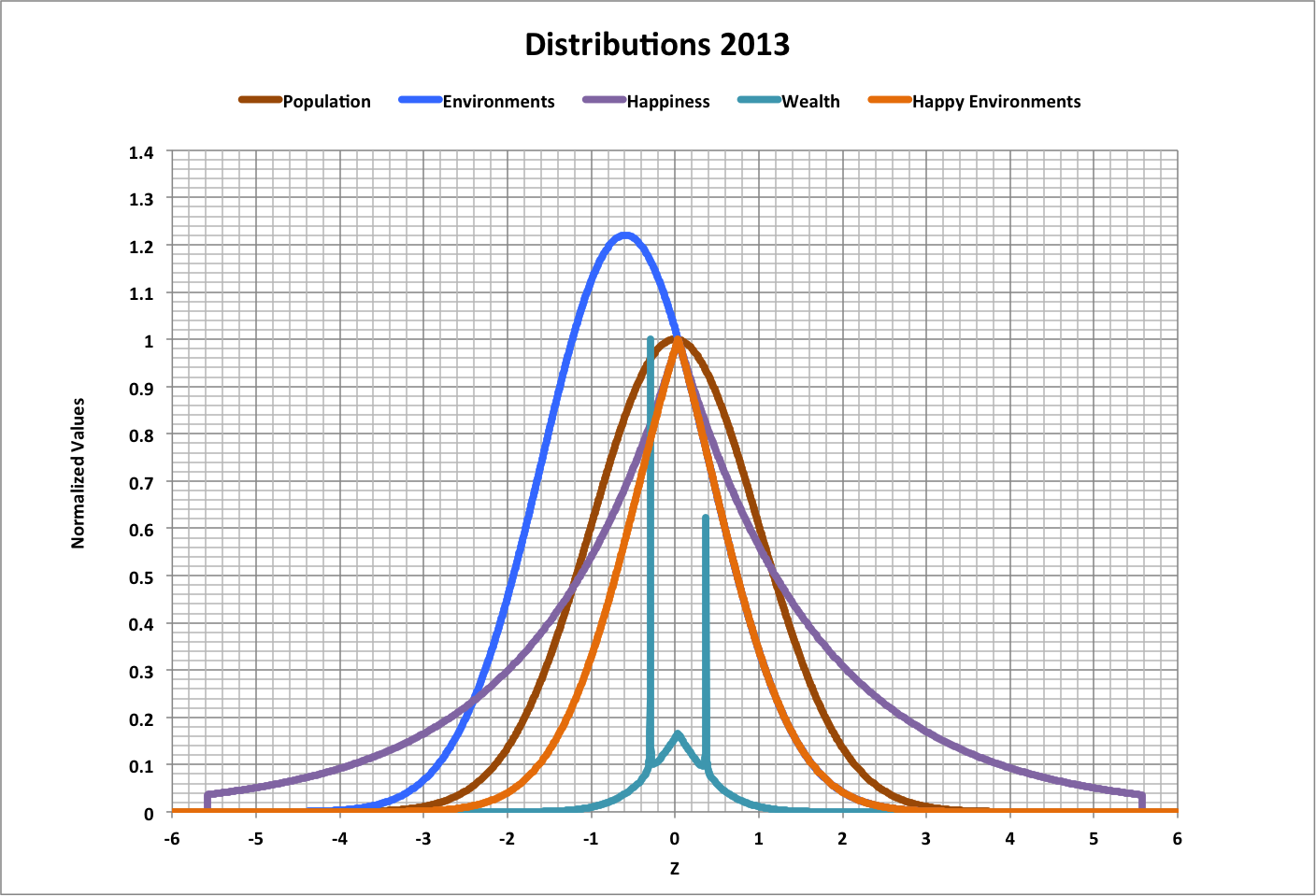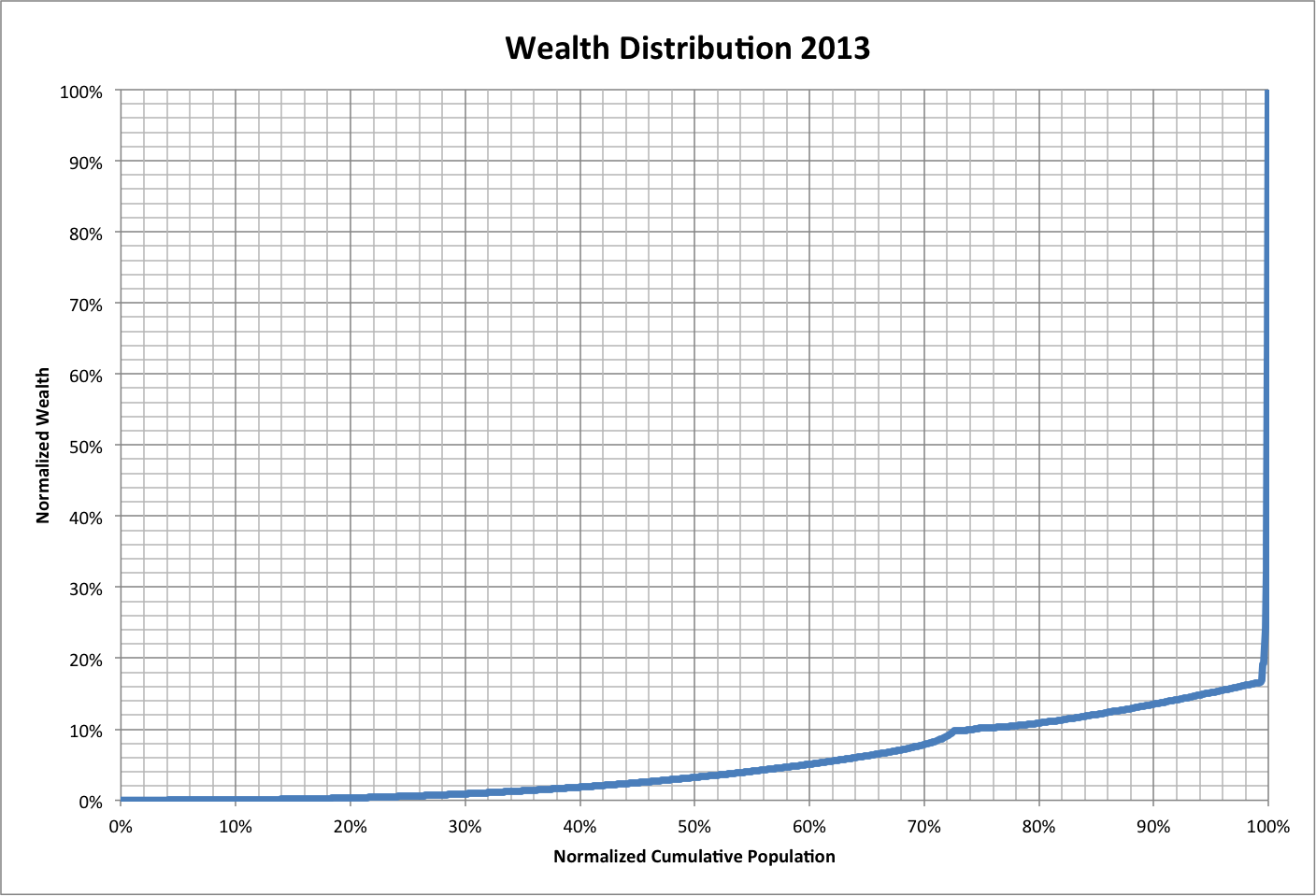In version 4 of the Population-consumption model, an economy is a social structure that enables people to collaborate in the manipulation of environments (acquisition, alteration, and consumption) with the goal of maximizing the number of happy environments, where a "happy environment" is an environment that provides total life satisfaction (a happiness of 1) to its occupant.
On a global scale, happy environments are statistical artifacts, averages of a large number of complex pieces. Environments actually occupied by fully happy people are rare. Note that within the context of the model, the dominant economic philosophies appear to differentiate themselves according to whether the goal is to maximize actual happy environments or average happy environments (by carving actual environments into pieces and effectively distributing them to the people who can use them). The following discussion uses this latter definition, since that seems to be the one most practically in use.
At any given time, the number of happy environments is the average happiness of the population times the size of the population. This number is a basic value for the economy, but in traditional economics it is only one of three dimensions, and is not generally counted.
The second economic dimension is the amount of transformation done in a given interval of time (typically a year). "Transformation" is the conversion of part of an environment from serving one person (contributing to that person's happiness) into serving another person. The simplest measure of transformations is the number of totally happy people that result from the transformation; this too is equal to the number of happy environments. Thus, squaring the number of happy environments measures the amount of the economic activity: so many transformations of so many environments. In fact, the conventional measure, Gross World Product or GWP (and on a smaller scale, Gross Domestic Product), is proportional to the square of the average number of happy environments.
Our global economy enables people to treat economic activity as a commodity. To facilitate this, a full set of virtual happy environments (the third economic dimension) is created and maintained for each unit of economic activity. The total number of these environments is a measure of the size of the economy, and is proportional to total wealth.
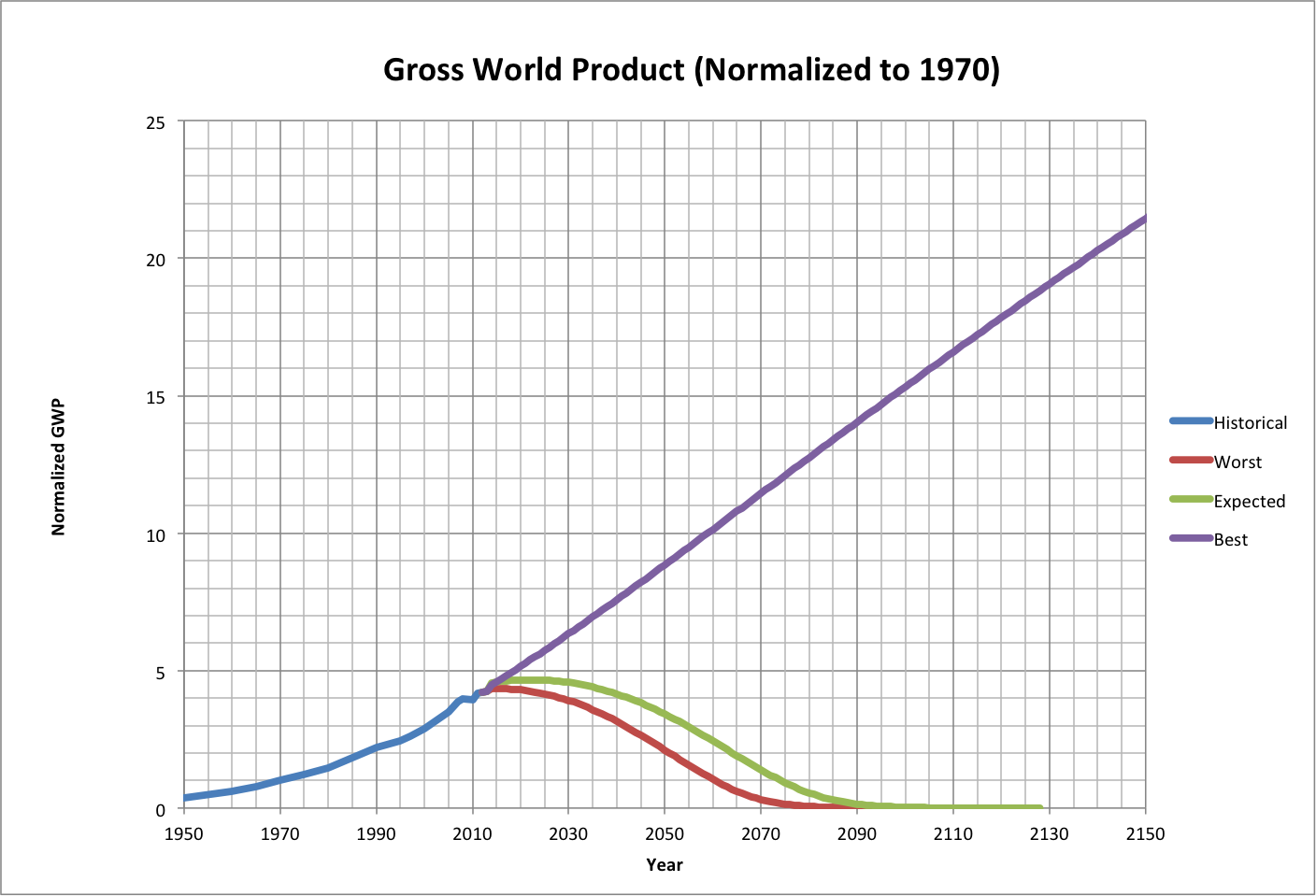 |
GWP is proportional to the square of happiness times population. Just as happiness and population peak in the Worst and Expected cases, GWP will peak at the same time as population and drop to zero by early next century. The Best case climbs to a maximum in 2821, to nearly 61 times what it was in 1970. Maximum and inhabited environments are locked together (see Worst Case Technical Discussion). |
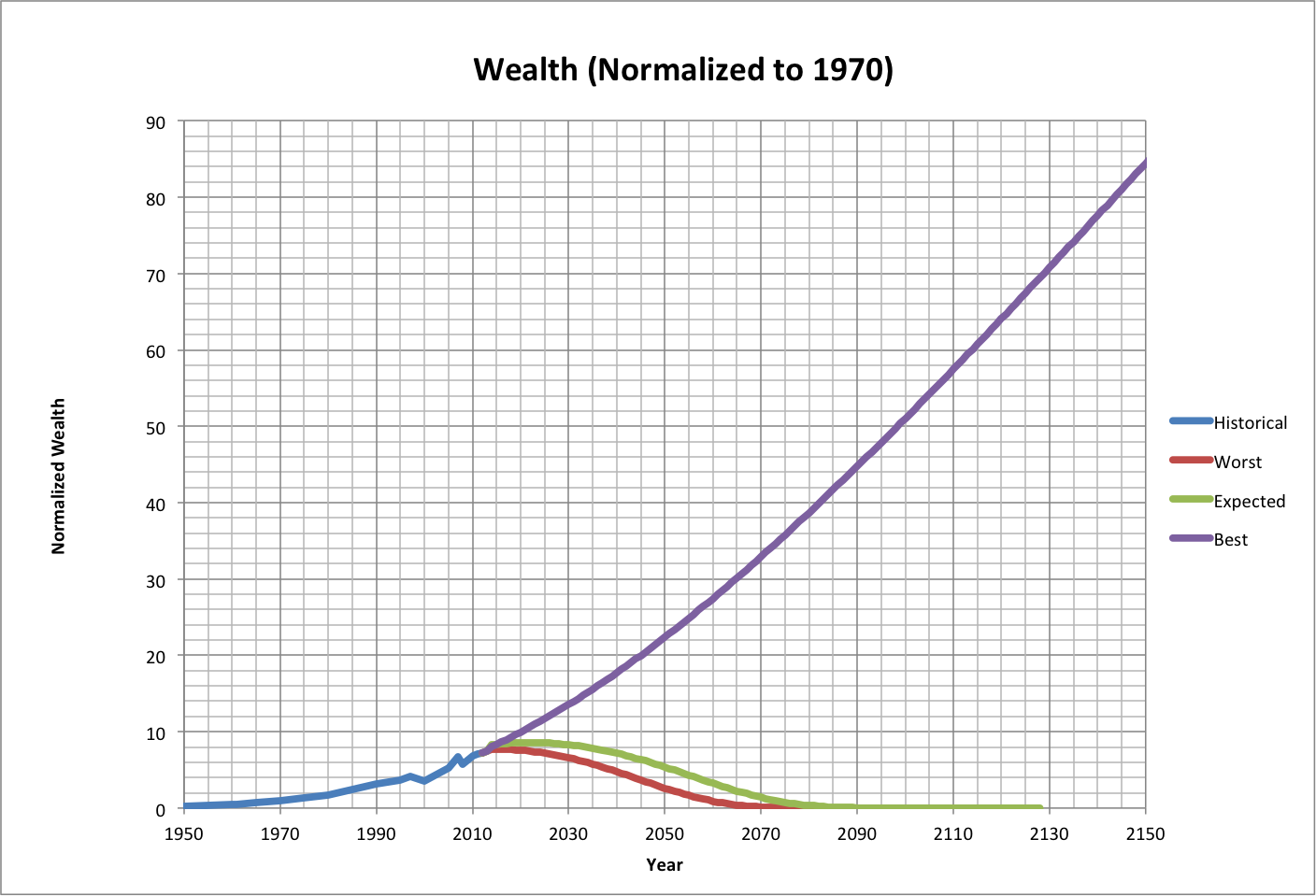 |
Wealth is proportional to the cube of happiness times population. In the Worst and Expected cases, it peaks with population and falls to zero early in the next century. The Best case climbs to a maximum in 2821, at 403 times what it was in 1970.
|
Basic equations:
Hpop = h * Ppop
GWP = dG * (h * Ppop)2
W = dW * (h * Ppop)3
where:
- GWP is the overall value of the global economy, the Gross World Product (GWP)
- h is happiness
- Hpop is the average number of happy environments
- Ppop is the size of the human population, in people
- W is total wealth
- The rest are constants
|
||
Wealth is distributed according to economic size per person (S) and the absolute value of footprint (F'), as projected in the following diagrams for 2013 (with the ratio of population to environments locked at hmax). Specifically, for a group of people Pp:
where:
Note that the values for wealth plotted in the following diagrams are actually V / Vmax. |
||
|
||
| If humanity pursues high population alternative worlds, as indicated by simulations of the ratios of population to happiness and footprint to happiness, then economic variables will oscillate and decline to a new average in about 50 years, as shown below (where Size is proportional to GWP and all values are normalized to the year 2013): | ||
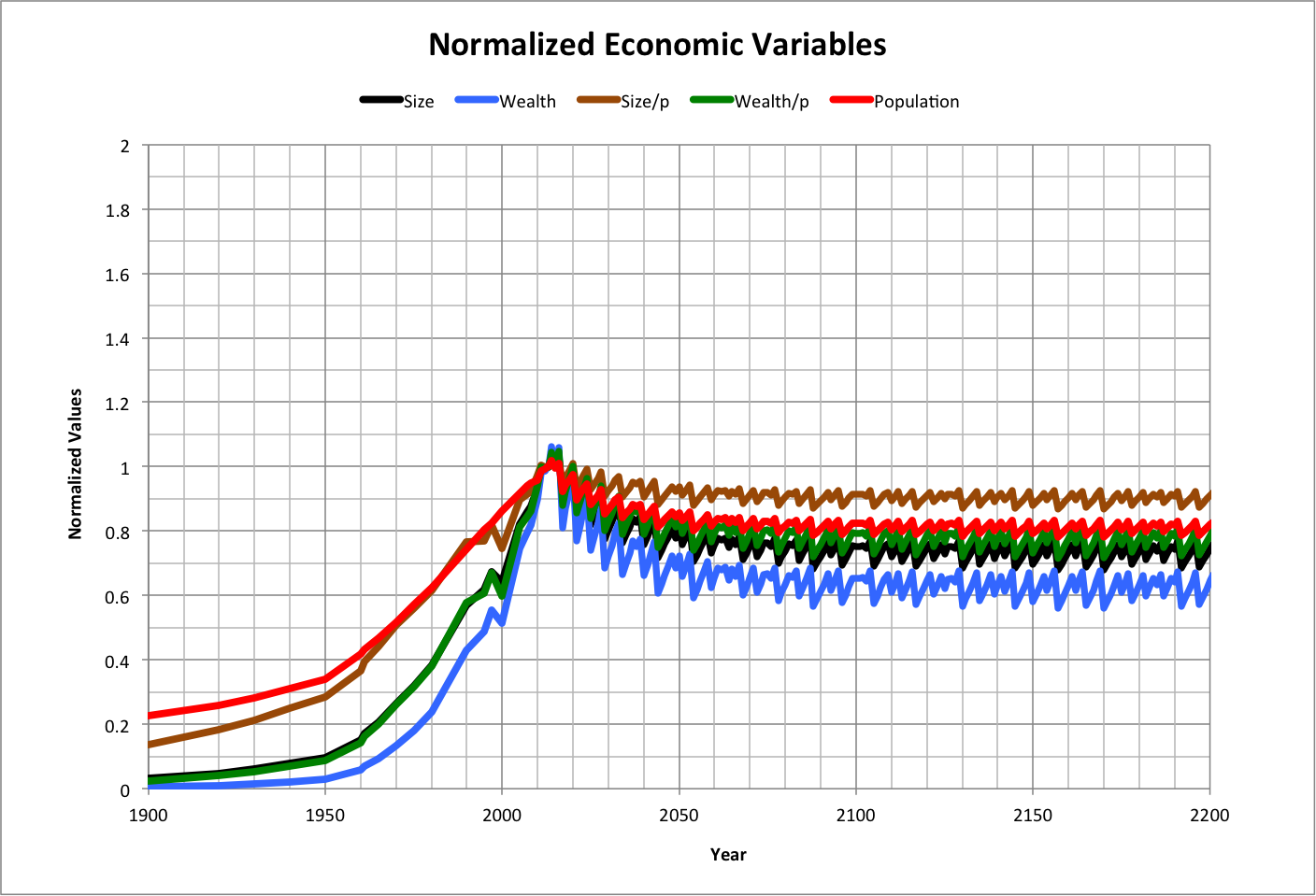 |
||
See also: Happy Environments (blog post) Population-Consumption v4 Main Page Worst Case Technical Discussion |
